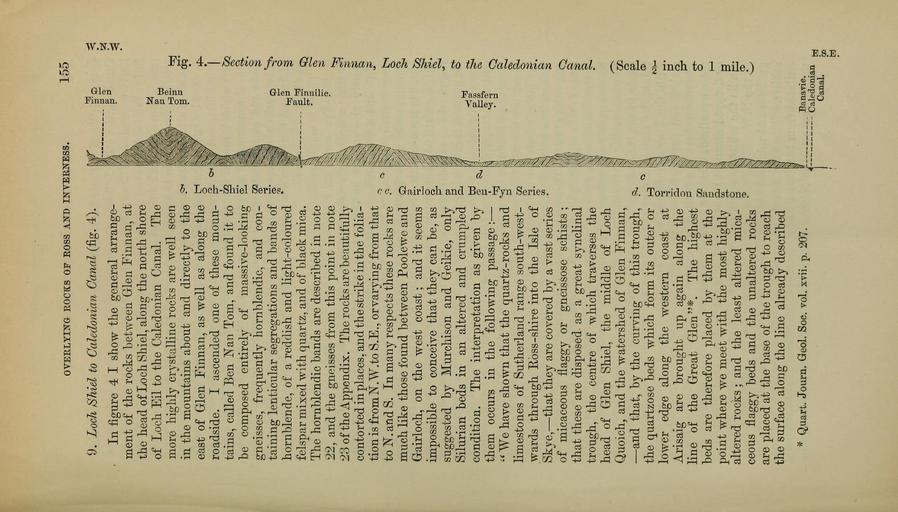MAKE A MEME
View Large Image

| View Original: | The_Quarterly_journal_of_the_Geological_Society_of_London_(13204612415).jpg (2076x1184) | |||
| Download: | Original | Medium | Small | Thumb |
| Courtesy of: | commons.wikimedia.org | More Like This | ||
| Keywords: The Quarterly journal of the Geological Society of London (13204612415).jpg OVERLYING ROCKS OF ROSS AND INVERNESS <br> 155 <br> 9 Loch Shiel to Caledonian Canal fig 4 <br> In figure 4 I show the general arrange- <br> ment of the rocks between Glen Finnan at <br> the head of Loch Shiel along the north shore <br> of Loch Eil to the Caledonian Canal The <br> more highly crystalline rocks are well seen <br> in the mountains about and directly to the <br> east of Glen Finnan as well as along the <br> roadside I ascended one of these moun- <br> tains called Ben Nan Tom and found it to <br> be composed entirely of massive-looking <br> gneisses frequently hornblendic and con- <br> taining lenticular segregations and bands of <br> hornblende of a reddish and light-coloured <br> felspar mixed with quartz and of black mica <br> The hornblendic bands are described in note <br> 22 and the gneisses from this point in note <br> 23 of the Appendix The rocks are beautifully <br> contorted in places and the strike in the folia- <br> tion is fromN' W to S E orvarying from that <br> to N and S In many respects these rocks are <br> much like those found between Poolewe and <br> Gairloch on the west coast ; and it seems <br> impossible to conceive that they can be as <br> suggested by Murchison and Geikie only <br> Silurian beds in an altered and crumpled <br> condition The interpretation as given by <br> them occurs in the following passage ” <br> ; We have shown that the quartz-rocks and <br> limestones of Sutherland range south-west- <br> wards through Ross-shire into the Isle of <br> Skye ” that they are covered by a vast series <br> of micaceous flaggy or gneissose schists ; <br> that these are disposed- as a great synclinal <br> trough the centre of which traverses the <br> head of Glen Shiel the middle of Loch <br> Quoich and the watershed of Glen Finnan <br> ” and that by the curving of this trough <br> the quartzose beds which form its outer or <br> lower edge along the western coast at <br> Arisaig are brought up again along the <br> line of the Great Glen The highest <br> beds are therefore placed by them at the <br> point where we meet with the most highly <br> altered rocks ; and the least altered mica- <br> ceous flaggy beds and the unaltered rocks <br> are placed at the baso of the trough to reach <br> the surface along the line already described <br> Quart Journ Geol Soc vol xvii p 207 <br> c <br> cro <br> 36928740 113681 51125 Page 155 Text 39 http //www biodiversitylibrary org/page/36928740 1883 Geological Society of London Biodiversity Heritage Library The Quarterly journal of the Geological Society of London v 39 1883 Geology Periodicals Smithsonian Libraries bhl page 36928740 dc identifier http //biodiversitylibrary org/page/36928740 smithsonian libraries Information field Flickr posted date ISOdate 2014-03-16 Check categories 2015 August 26 CC-BY-2 0 BioDivLibrary https //flickr com/photos/61021753 N02/13204612415 2015-08-26 13 54 57 cc-by-2 0 PD-old-70-1923 The Quarterly journal of the Geological Society of London 1883 Photos uploaded from Flickr by Fæ using a script | ||||